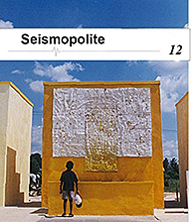October 8, 2015
Art and social responsibility
In cooperation with the School of Philosophy and Art History of the University of Essex we are proud to present a handful of texts proceeding from the graduate conference in Art History and Curatorial Studies: “Art and social responsibility since the 1960s”, that was held in May this year. We would like to thank our contributors, and not least – the conference organizers – for their excellent cooperation and for making possible the issue you currently hold in your hands.
The editor
Foreword by the conference organizers
Through this conference, we wanted to challenge, question and unmask the term ‘social responsibility’. Most of us were first acquainted with the term not through art institutions such as museums but through corporate marketing schemes and labels on products from smoothies to cereals declaring a social responsibility to the customer. Despite the various academic institutions and corporate entities which have exploited this term past its credibility point; this slippery, highly adaptable and somewhat overused term, remains part of larger debates concerning public engagement with art and the social implications of art production and display. The term in fact gained prominence in the 1960s, its emergence linked to the various debates that marked a decade of social change, which culminated in the worldwide protests of May 1968. These shifts, from being used in protest rhetoric to businesses models and marketing strategies to a means of holding art institutions accountable leads us today to question: Who is responsible for the content and reaction to art? The artist? The viewer? The sponsor? Does art need to be accountable to the public? Where does social responsibility for artistic practice lie, with corporations, institutions or artists?
The speakers of the conference came from diverse academic backgrounds and disciplines, ranging from our own business school to an artist’s botanic- and community-based practice. Collectively, their papers problematise these questions in an attempt to continue identifying the divides or internal fissures which run through the term ‘social responsibility’.
Ultimately, we chose ‘social responsibility’ as a theme for this conference because we believe that art, the study of art and the practice of art, should be informed by an awareness of how our aesthetic experiences are shaped by institutions, which are in turn shaped by various other factors. In this sense, we enter the public debate with the understanding that art has the potential to function as an instrument of justice. As a society, we often look to art for its symbolic and economic value and today we would like to acknowledge that it can be attacked, or at least critiqued, on the same plane.
So, why use a conference to discuss this topic? Earlier this year Christy Wampole questioned the role of conferences and their efficacy in addressing the current state of research and academia, in general[1]. Keeping in mind the 50th anniversary celebrations of the University of Essex, this conference takes art as its point of departure for entering the current debates surrounding the future of the term ‘social responsibility’. The papers presented demonstrate the belief that conferences like this one, still remain spaces in which we can dissect and answer questions related to the social commitment of academia.
The conference organizers, MA students in Art History and Curatorial Studies of the University of Essex
Sebastian Bustamante
Samantha Coe
Charlotte Frost
Gisselle Giron
Solange Gulizzi
Carine Harmand
Jana Hess
Jasmine Magaña
[1] Christy Wampole, ”The Conference Manifesto “, The New York Times, May 4 2015. http://opinionator.blogs.nytimes.com/2015/05/04/the-conference-manifesto/?_r=0









